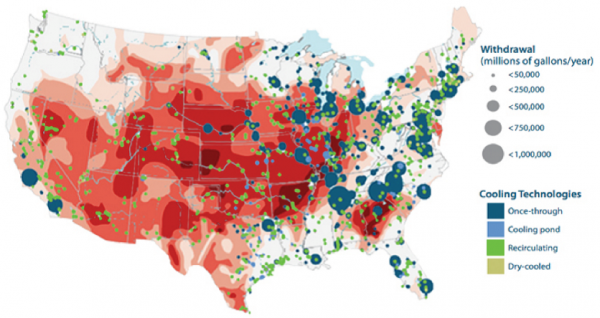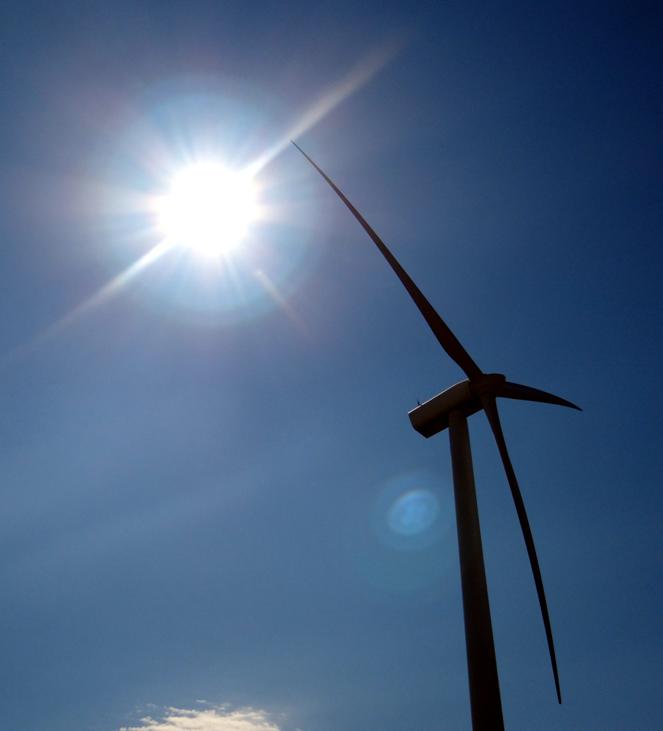This summer’s power plant water troubles have folks in Washington looking for answers on energy-water issues. Thank goodness.
Over the past few months, the risks that come along with power plants’ water dependencies have been clearer than ever before. Rising sea levels, a colleague has pointed out, mean that the sand at the beach is a bad place to hide your head on climate change. Given increasing water temperatures, it turns out that the water isn’t a good place to hide either… or something to ignore if you care about safe, reliable power.

Water, water everywhere, but… (Photo credit: Nuclear Regulatory Commission)
The drought that has hit hard all across the country (and still has its grip on plenty of our compatriots) meant that the map of power plant troubles we released in July was quickly in need of updating… which we’ve just done, in a version festooned with hot new 2012 cases.
Water troubles get the attention of power plant operators and owners, who have to figure out how to either dial back, shut down, or push the temperature limits that are there to moderate their impacts on our rivers and lakes.
The troubles show up on the radar screens of neighbors, too, particularly when the effects of too-high water temperatures are already visible, even without the power plant piece. (Nothing like tens of thousands of dead bass, carp, and sturgeon to focus attention.)
Happenings on the Hill, and beyond
And then there are those D.C. decision makers asking questions about energy-water issues — about what we’re doing, where we’re headed, and how we might do things a mite differently. Here’s a taste:
- Rep. Ed Markey, the top Democrat on the U.S. House of Representatives Natural Resources Committee, recently released a report on the issues: Energy and Water: Connection and Conflict. The write-up draws nicely on our recent energy-water report, which I got to present at a Capitol Hill energy-water briefing earlier this year. The Markey report looks at where water comes into play in power production, how climate change factors in, and what we can do about it all.
A big takeaway, as Rep. Markey points out, is that “Understanding water’s relationship to energy in a warming world is critical to protecting consumers and ensuring our national security.”

The Markey report’s version of UCS’s power plant water withdrawal map, with a drought map overlay. Pretty in pink? Maybe not.
- Elsewhere in the House, Reps. Henry Waxman and Bobby Rush, the top Democrats on the Energy and Commerce Committee and Energy and Power Subcommittee, have been pushing for better understanding, too. They sent a letter earlier this month to their Republican counterparts asking for a hearing specifically on how climate change is affecting U.S. energy generation. As Rep. Waxman and Rush sagely put it,
“For years, scientists have warned that climate change will bring more heat waves and droughts, and we are currently experiencing impacts consistent with these predictions. Now there are growing indications that these climatic changes are having a harmful impact on the electricity sector.”
- The new chair of the Nuclear Regulatory Commission, Allison Macfarlane, is pushing to get a better handle on the energy-water connection, too. She recently told the media that:
“I have actually asked the staff to look into the issue of what are some of the climate change impacts, potential climate change impacts that are coming down the road. And one of them is the issue of water — water sources, output water sources, getting more.”
Since nuclear plants get into hot water (so to speak) more often than other plants, it’s great to have the NRC focusing in on this, too.
And some on Capitol Hill were thinking about these issues even before this summer. Sens. Jeff Bingaman and Lisa Murkowski, the Senate Energy and Natural Resources Committee’s top Democrat and Republican, respectively, in 2009 introduced a bill to “provide for the conduct of an in-depth analysis of the impact of energy development and production on the water resources of the United States.” A similar bill by Rep. Bart Gordon passed in the House that session. But getting all the way through the legislative process turns out to sometimes be as tough for energy-water bills as for others.

Wind and sun; no water needed (Photo credit: me, actually)
Where we go next
We know there are solutions to energy-water issues, so it’s good to ask questions, to get better information, and to move toward answers. The Markey report talks about good stuff like higher efficiencies to cut energy and water use, more low-water electricity options like wind and solar photovoltaics, and more innovation. As our new infographic says, “Smart energy decisions can reduce the risk of energy-water collisions.”
Policy progress is hard to come by when folks can’t be heard over the noise of the election (or, in some locales, make it through dinner without a half dozen robocall interruptions).
But energy-water issues are well worth re-visiting, and soon.
